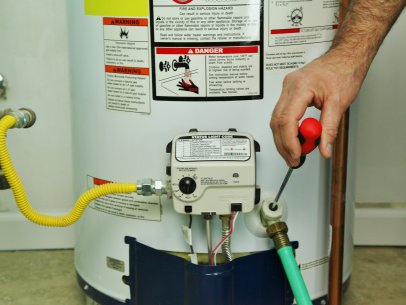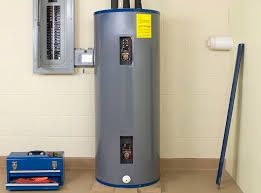What are your concepts on How to Maintain Your Water Heater & Prolong its Life?

Warm water is essential for everyday convenience, whether it's for a rejuvenating shower or washing recipes. To guarantee your warm water system runs efficiently and lasts much longer, regular upkeep is key. This short article gives useful ideas and insights on exactly how to keep your home's hot water system to prevent disturbances and costly repair services.
Intro
Maintaining your home's warm water system could seem difficult, yet with a few easy actions, you can guarantee it operates smoothly for several years to come. This guide covers whatever from recognizing your hot water system to DIY maintenance ideas and recognizing when to hire expert aid.
Relevance of Maintaining Your Hot Water System
Routine upkeep not just extends the lifespan of your hot water system however additionally guarantees it operates efficiently. Overlooking maintenance can result in reduced performance, greater power costs, and even premature failure of the system.
Indications Your Hot Water System Requirements Upkeep
Recognizing when your warm water system requires focus can prevent major issues. Look out for signs such as inconsistent water temperature, odd sounds from the heating unit, or rustic water.
Purging the Hot Water Heater
Purging your water heater eliminates debris accumulation, boosting performance and lengthening its life.
Monitoring and Changing Anode Rods
Anode poles protect against deterioration inside the container. Evaluating and changing them when broken is critical.
Facility Concerns Calling For Specialist Assistance
Instances include major leaks, electrical problems, or if your hot water heater is continually underperforming.
Regular Expert Upkeep Advantages
Professional maintenance can consist of detailed examinations, tune-ups, and guaranteeing compliance with safety criteria.
Evaluating and Changing Temperature Settings
Adjusting the temperature level setups makes certain ideal performance and safety.
Do It Yourself Tips for Upkeep
You can carry out several upkeep tasks on your own to maintain your hot water system in top problem.
Checking for Leaks
Regularly check pipes and links for leakages, as these can result in water damage and higher costs.
Comprehending Your Hot Water System
Prior to diving right into maintenance jobs, it's practical to recognize the fundamental components of your warm water system. Usually, this includes the hot water heater itself, pipes, anode poles, and temperature level controls.
Monthly Upkeep Tasks
Routine monthly checks can aid catch small problems before they intensify.
Evaluating Stress Relief Valves
Testing the stress relief valve guarantees it functions appropriately and avoids too much pressure build-up.
Protecting Pipes
Protecting hot water pipelines reduces warm loss and can save power.
When to Call a Professional
While do it yourself maintenance is helpful, some issues need professional know-how.
Verdict
Routine upkeep of your home's hot water system is vital for performance, longevity, and expense savings. By complying with these pointers and knowing when to look for professional assistance, you can make certain a reliable supply of hot water without unforeseen disturbances.
How to Maintain an Instant Hot Water Heater
Before tinkering with your hot water heater, make sure that it’s not powered on. You also have to turn off the main circuit breaker and shut off the main gas line to prevent accidents. Also turn off the water valves connected to your unit to prevent water from flowing into and out of the appliance. 2. When you’re done, you have to detach the purge valves’ caps. These look like the letter “T†and are situated on either side of the water valves. Doing so will release any pressure that has accumulated inside the valves while at the same time avoid hot water from shooting out and burning your skin. 3. When the purge valves’ caps are removed, you have to connect your hosing lines to the valves. Your unit should have come with three hoses but if it didn’t, you can purchase these things from any hardware or home repair shops. You can also get them from retail stores that sell water heating systems. Read the user’s manual and follow it to complete this task properly. When the hosing lines are connected, open the purge port’s valves. 4. You should never use harsh chemical cleaners or solutions when cleaning your unit. Make use of white vinegar instead. It should be undiluted and you’ll probably use about 2 gallons. 5. Now flush your water heater. This task should probably take about 40 minutes. We can’t give you specific directions for this because the procedure is carried out depending on the type, model and brand of your heater. With that being said, refer to the user’s manual. 6. When you’re done draining the unit, you have to turn off the purge port valves again. Remove the hosing lines that you earlier installed on each of the water valves. Put the valve caps (purge port) back in their respective places and be very careful so as not to damage the rubber discs that are found inside these caps. 7. Now that everything’s back in place, check your user’s manual again to find out how to reactivate your water heating system. 8. Once it is working, turn one of your hot water faucets on just to let air pass through the heater’s water supply pipes. Leave the tap on until water flows smoothly out of it. https://www.orrplumbing.com/blog/2014/september/how-to-maintain-an-instant-hot-water-heater/

We hope you enjoyed reading our section about Water Heater Maintenance Tips You Can't Afford to Forget. Thank you for finding the time to browse our posting. Appreciated our blog? Please quickly share it. Help others check it out. We recognize the value of your readership.
Book Instantly